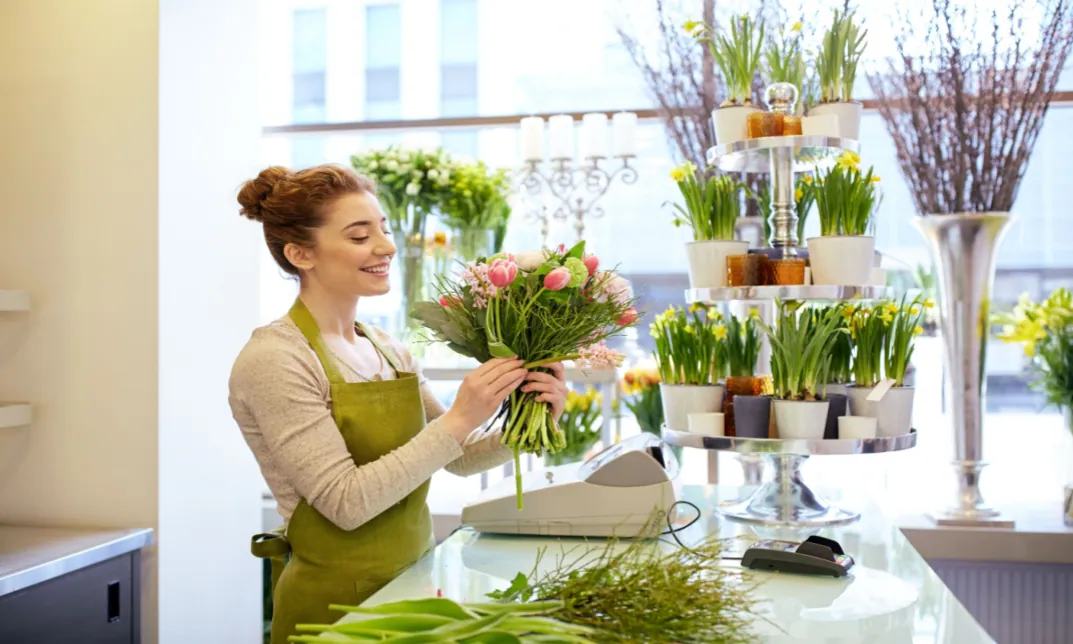Are you fascinated by the world of flowers and eager to turn your passion into a career? Do you wonder what it takes to become a skilled florist, creating beautiful arrangements that bring joy to others? If so, you’re in the right place. In this blog, we’ll delve into the world of floristry, exploring the steps to take, the skills to develop, and the opportunities to pursue.
What is Floristry?
Floristry is the art of arranging and caring for flowers, foliage, and other plant materials to create stunning displays for various occasions. As a florist, you’ll have the chance to work with a wide range of flowers, from classic roses to exotic orchids, and use your creativity to craft unique arrangements that bring happiness to people’s lives. Whether it’s a wedding, birthday, or simply a bouquet to brighten up someone’s day, florists play a vital role in making special moments even more memorable.

How to Become a Florist?
Becoming a florist requires education, skills, training, and certification. Here’s a breakdown of the step-by-step process you can follow:
Develop Your Skills
Firstly, to become a successful florist, you need to develop a range of skills. These include:
- Creativity: The ability to design unique and appealing arrangements.
- Attention to Detail: Ensuring each arrangement meets the client’s specifications.
- Customer Service: Communicating effectively with clients to understand their needs.
- Time Management: Handling multiple orders and deadlines efficiently.
Gain Education and Training
While formal education is not always required, taking courses in floristry can be beneficial. Thus, consider enrolling in a floristry program at a community college or vocational school. These programs often cover essential topics such as flower identification, design principles, and business management.
Get Hands-On Experience
Experience is important in the floristry industry. Therefore, seek opportunities to work in a flower shop or as an apprentice to a professional florist. This hands-on experience will help you understand the day-to-day operations of a flower business and refine your skills.
Build a Portfolio
As you gain experience, start building a portfolio of your work. A well-presented portfolio showcasing your best arrangements can be a valuable asset when applying for jobs or attracting clients.
Consider Certification
Although not mandatory, obtaining certification can enhance your credibility as a florist. Organisations such as the British Florist Association offer certification programs that can help you stand out in the industry.
Career Paths in Floristry
Once you have learned how to become a florist, you can explore various career paths. Here are some options:
- Retail Florist: Working in a flower shop, creating arrangements for walk-in customers.
- Event Florist: Specialising in arrangements for weddings, parties, and corporate events.
- Floral Designer: Creating designs for special occasions, often working with event planners.
- Wholesale Florist: Supplying flowers to retailers and other businesses.
- Floral Educator: Teaching floristry courses at educational institutions or workshops.
Challenges and Rewards of Being a Florist
Like any career, floristry comes with its challenges and rewards. Therefore, it is important to weigh these factors before deciding to pursue this path.
Challenges:
- Physical Demands: The job can be physically demanding, requiring long hours on your feet and lifting heavy buckets of flowers.
- Seasonal Fluctuations: Business can vary depending on the season, with peak times around holidays and wedding seasons.
- Perishable Products: Working with perishable products means dealing with waste and ensuring timely delivery.
Rewards:
- Creative Expression: Floristry allows for creative expression through the use of colours, textures, and shapes.
- Client Satisfaction: Bringing joy to clients through beautiful arrangements can be highly rewarding.
- Diverse Opportunities: The industry offers diverse opportunities, from retail to event planning.
Tips for Success in Floristry
To succeed in floristry, consider the following tips:
- Develop your skills: Continuously update your skills and knowledge to stay ahead in the industry.
- Be creative: Think outside the box and come up with unique and innovative designs.
- Provide excellent customer service: Build strong relationships with your customers to ensure repeat business and referrals.
- Stay organised: Manage your time and resources effectively to meet deadlines and deliver high-quality arrangements.
Conclusion
Learning how to become a florist involves developing a unique set of skills, gaining education and experience, and exploring various career paths. It is a career that offers both creative fulfilment and the opportunity to bring joy to others. Therefore, if you have a passion for flowers and design, floristry could be the perfect career for you. Whether you choose to work in a bustling flower shop or specialise in creating arrangements for grand events, the possibilities are endless.





